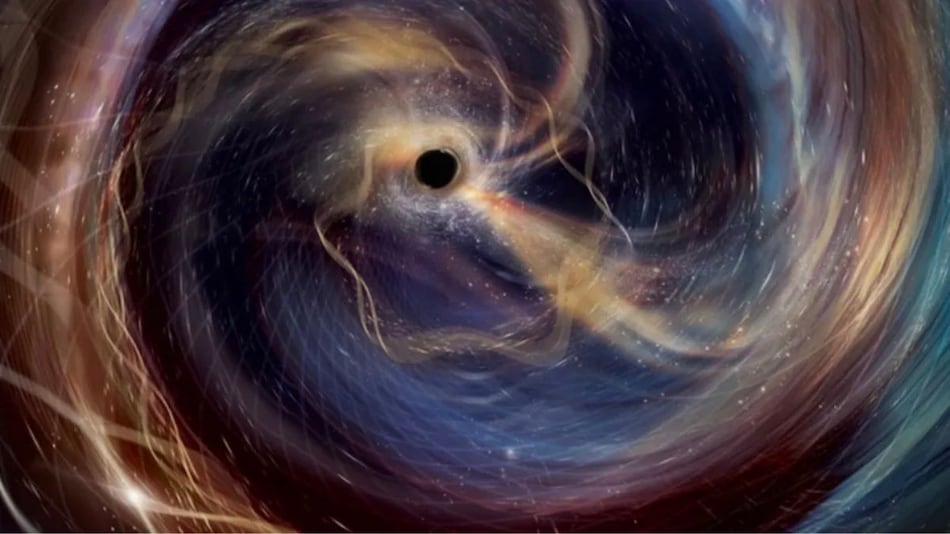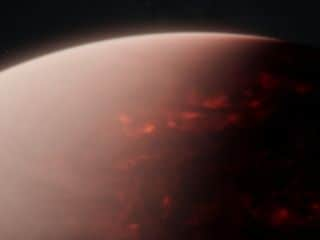- Home
- Science
- Science News
- Rare ‘Second Generation’ Black Holes Detected, Proving Einstein Right Again
Rare ‘Second-Generation’ Black Holes Detected, Proving Einstein Right Again
Two black hole collisions reveal rare second-generation black holes and fresh proof for Einstein’s century-old physics.

Photo Credit: Aurore Simonnet SSU/EdEon/LVK/URI
Gravitational-wave signals reveal rare second-generation black holes and confirm Einstein’s predictions
Physicists have identified two black hole collisions that are likely the result of two “second-generation” black holes, which are bred from earlier mergers. With space-time vibrations, these new finds reveal that one black hole of each pair is rotating very fast and is far more massive than its partner, a strong indication. All of these traits suggest a violent predecessor. This discovery has provided new support for Einstein's expectations about black hole actions and spin and offers a new view on how immensity's robots grow in high-populated star clusters.
Einstein Proven Right Again as Rare Back-to-Back Black Hole Mergers Reveal Unusual Spins
According to a report published in The Astrophysical Journal Letters, researchers tracked two back-to-back mergers—recorded by LIGO-Virgo-KAGRA detectors—only one month apart. The first, GW241011, involved black holes six and 20 times the mass of the sun, around 700 million light-years away. The second, GW241110, showed black holes eight and 17 times the sun's mass at a distance of 2.4 billion light-years.
“The larger black holes spin remarkably quickly and even in opposing directions, a behaviour not seen in hundreds of previous pieces of observations,” mentioned co-lead author B.P. Gaensler, from the University of Toronto. “These signs indicate they arose in extremely densely populated cosmic settings where black holes perpetually crash into each other. The researchers also noted that these observations were extremely consistent with Einstein's theory of rotating black holes, as it also included subtle “hum-like” notes in the gravitational waves.
Experts think that such cosmic episodes might enable monitoring of how black holes develop in jammed star clusters and provide the public with novel material on the most extreme things in the universe that bend space-time.
Get your daily dose of tech news, reviews, and insights, in under 80 characters on Gadgets 360 Turbo. Connect with fellow tech lovers on our Forum. Follow us on X, Facebook, WhatsApp, Threads and Google News for instant updates. Catch all the action on our YouTube channel.
Related Stories
- Samsung Galaxy Unpacked 2025
- ChatGPT
- Redmi Note 14 Pro+
- iPhone 16
- Apple Vision Pro
- Oneplus 12
- OnePlus Nord CE 3 Lite 5G
- iPhone 13
- Xiaomi 14 Pro
- Oppo Find N3
- Tecno Spark Go (2023)
- Realme V30
- Best Phones Under 25000
- Samsung Galaxy S24 Series
- Cryptocurrency
- iQoo 12
- Samsung Galaxy S24 Ultra
- Giottus
- Samsung Galaxy Z Flip 5
- Apple 'Scary Fast'
- Housefull 5
- GoPro Hero 12 Black Review
- Invincible Season 2
- JioGlass
- HD Ready TV
- Laptop Under 50000
- Smartwatch Under 10000
- Latest Mobile Phones
- Compare Phones
- Vivo S50 Pro Mini
- Vivo S50
- OPPO Reno 15c
- Redmi Note 15 5G
- Redmi Note 15 Pro 5G
- Redmi Note 15 Pro+ 5G
- Lava Play Max
- Poco C85 5G
- Asus ProArt P16
- MacBook Pro 14-inch (M5, 2025)
- OnePlus Pad Go 2
- Poco Pad M1
- Just Corseca Skywatch Pro
- Honor Watch X5
- Acerpure Nitro Z Series 100-inch QLED TV
- Samsung 43 Inch LED Ultra HD (4K) Smart TV (UA43UE81AFULXL)
- Asus ROG Ally
- Nintendo Switch Lite
- Haier 1.6 Ton 5 Star Inverter Split AC (HSU19G-MZAID5BN-INV)
- Haier 1.6 Ton 5 Star Inverter Split AC (HSU19G-MZAIM5BN-INV)

















